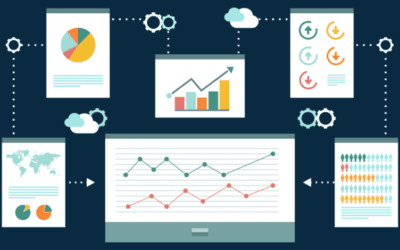A good forecaster is not smarter than everyone else, he merely has his ignorance better organized ~ Anonymous
If you are in business or sales, this time of the year is tough. It is the season for budgets and forecasts. You are either looking back and thinking what went wrong or taxing your brains on how to get it right for the next year. Or you could be one of the lucky few who raked in more, much much more than you forecasted. Either ways, this is not a good situation to be in. Predictability is key to successful business outcomes. You cannot decide how much to spend and where to spend unless you know with great accuracy how much and where your revenue is going to come from.
What usually happens in the forecasting process is that the senior management asks their sales leaders for a forecast, the sales leaders check with their reps for a “gut feel” number. The sales reps come up with a number (maybe 10%-20% lower than their gut feel number, to play it safe). The numbers roll up to the senior management. At this stage, the management takes a look at the numbers and checks it with the number they have in their minds (the number that will satisfy the investors/owners), then either discards the sales numbers completely and make up their own numbers or if you are lucky, the numbers get approved. This is quite a hellish process as you can see with lots of stress and heart burn at every stage but no guarantees that the end result is the most accurate version of forecast.
Accurate forecasting is an art – there is no foolproof method or formula to get it right but there are a few steps or actions that business/sales people can keep in mind that can improve the accuracy of the forecast and make the process easier:
Action #1 – Understand what Forecasting Is and Is Not – A forecast is not an aspirational goal, nor a “quota” or a “crowd-pleaser” number, nor an administration activity nor a computer program output. It is rather a Projection of ACHIEVABLE sales revenue, based on historical sales data, analysis of market surveys and trends, and salesperson’s estimates. Many people at this stage confuse a sales plan with a sales forecast – this is disastrous as it affects the entire chain of the business cycle which depends on the achievable number to do its planning to delivery on the forecast.
Action #2 – Collaborate to Win: To make forecasts more effective, there must be a free-flow of information between all the functions to prevent duplicacy or contradictory data. There has to be respect for different point of views. Each function has its own insights – delivery timelines, ramp-up plans from engineering, capacity constraints from operations, campaign or events plan from marketing, customer satisfaction scores from customer support– all of these could have an impact on the end revenue results. Hence, it is important to have a strong mechanism in place to efficiently bring together different organizational functions to contribute their inputs in a spirit of collaboration.
Action #3 – Joining the Dots: A good forecast is never stand-alone. It takes into account trends from the past too like the previous year(s) sales in the same time period to account for the impact of seasonal buying patterns, a similar state of the economy, currency exchange rate fluctuations, availability of resources, marketing campaigns, etc. As Eugene O’Neill famously said – There is no present or future, only the past, happening over and over again, now. Given that a forecast has to predict the future, it makes good sense to base it on what is known – the past.
Action #4 – Reward Accuracy: Like in other management areas, what gets rewarded gets done. Sales people often have the mindset that their job is to sell and not forecast. This mindset is disastrous for the company bottom-line. Accurate forecasts have a huge impact on the company margins so why not put some of it back to reward the source of accuracy. It is important to put in place policies and practices particularly in the job performance evaluation criteria to reinforce the fact that forecasting is important for business success.
Action #5 Track and Improve: At best, a sales forecast is an educated guesstimate built on the basis of certain assumptions. And the basis for assumptions as well as the assumptions themselves change rapidly in the business world. Hence it is critical to review the forecast on a regular basis (fortnightly at the very least) to check if the assumptions still hold good. Measure your forecast accuracy, develop mechanisms and metrics to identify and eliminate the sources of error and plough the learning back into your sales forecasting process. This will ultimately help build confidence in the forecasting process and improve the accuracy so that the entire organization can benefit from better planning.
“Business, more than any other occupation, is a continual dealing with the future; it is a continual calculation, an instinctive exercise in foresight.”
Henry R. Luce (1898–1967), US publisher
What process or mechanism do you use to generate accurate forecasts? What other steps do you take to improve the predictability of your business? I would love to know.
[/vc_column_text][/vc_column][/vc_row]




